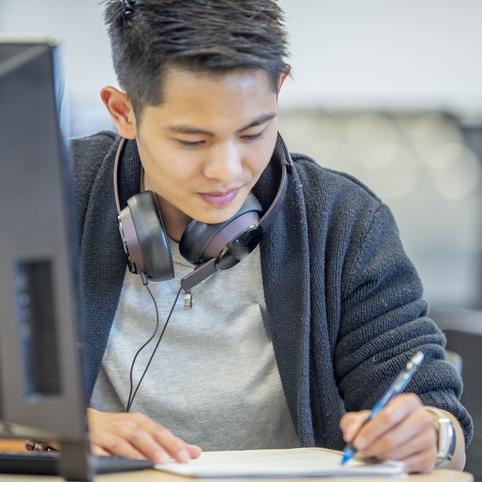Digital Education
Rules for Robots: How one of America’s top high schools is cautiously embracing AI
Jennifer Parnell is an AP® U.S. History teacher and chair of the Artificial Intelligence committee at The Lawrenceville School, a private high school in New Jersey. As colleges and K-12 schools across the country scramble to understand and adapt to fast-changing AI technologies, Parnell is advocating a careful, flexible approach that ensures AI becomes an aid to learning instead of an intellectual workaround.
“Is it a technology we should embrace, and to what extent?” Parnell asked on a recent webinar, explaining Lawrenceville’s schoolwide response to AI. “How can we stay current? It’s changing so rapidly, it’s almost impossible to be any sort of expert.”
Parnell has as much expertise as anyone when it comes to the effective use of AI in education. With her extensive experience as a teacher, a member of College Board advisory committees, and the head of Lawrenceville’s effort to bring AI into the classroom, she’s spent the past year developing best practices for schools.
Here’s some of the critical advice she shared for educators and leaders.
- Set clear rules for AI, and be open to questions. Because AI technologies are so new, students don’t have an established set of rules or ethical principles to guide them in exploring it. Teachers and school officials need to get specific about what counts as misconduct so that there aren’t misunderstandings. “It’s not always clear to students what constitutes academic dishonesty,” Parnell said. “It’s difficult sometimes to know exactly where those boundaries are.” The more teachers can encourage open conversation and questions about AI, the more likely students will feel comfortable raising ethical concerns.
- Augment learning, don’t replace it. The key question for AI in schools is whether it’s serving to enhance learning or allowing students to avoid it. Using AI to generate a whole essay is a shortcut that undermines learning; using an AI program to get feedback on specific parts of an essay, revising and sharpening the language in response to AI critiques, can help students think more clearly about their work. “A lot of the kids say it’s like having a really smart roommate, someone who can jump right into the discussion,” Parnell said. “Students are starting to learn how to use it more as a Socratic tutor.”
- Core learning first; AI later. Parnell said it’s important that students acquire foundational skills in reading, writing, and reasoning before they begin experimenting with AI tools, which is why her school has limited acceptable AI usage to higher grades. “AI is something you can start to use after you’ve already learned to read and write very well, after you’ve learned to go out and do research, after you’ve learned how to write a thesis statement,” she said. “We’re not moving completely toward this technology, but we’re starting to see specific use cases … allowing students to explore this in a more responsible way.”
- Rethink assessments. Many teachers are spending more time on in-class assessments — essays written by hand or in locked-down browsers — and putting less weight on take-home assignments, Parnell said. There’s even been talk of returning to more oral exams, where teachers ask students a series of questions about a paper or research projects to check the depth of their learning. “That’s where you really get to see what a student knows,” Parnell said. “They still need to really understand it.”
- Prepare for life beyond high school. How will AI change the kind of work students are expected to do in college? Will employers expect new hires to have experience working with AI tools? “We don’t know what processes and projects will exist in college,” Parnell said. “We don’t know what their professional work lives will look like in three or four years.” But it’s a safe bet that AI technologies will play a larger role than they do now, so simply prohibiting students from using them is unlikely to be a sound strategy for educators. “Work is apt to shift quickly, and workers will need new skills,” predicts the business consultancy Deloitte. “The Generative AI revolution holds enormous opportunities for organizations that prepare to adapt and evolve.”
- Emphasize human-specific skills. The fast growth in AI capabilities has pushed teachers and school administrators to consider “soft skills” as a larger focus of the curriculum — things like building relationships, communicating well in person, applying creativity to real-world problems. If computers are going to be adept at coding and sentence structure, focusing on humanistic specialties makes sense. “It’s a really interesting opportunity to target development of different skills than we might have focused on before,” Parnell said.
- Bring students into the conversation. Parnell’s school has an AI committee that includes faculty, students, and alumni, allowing for a wide-ranging discussion of AI ethics, ideas for using it in the classroom, and even proposals to apply AI tools to other projects around the school, like course scheduling or athletic training. Parnell said the goal is to “create real and purposeful opportunities for students to use AI,” mirroring the kind of brainstorming sessions that companies are using to experiment with the new technology.





